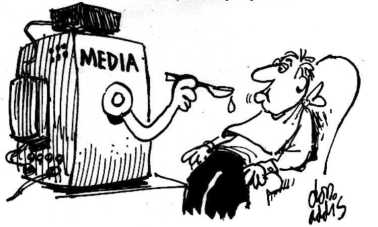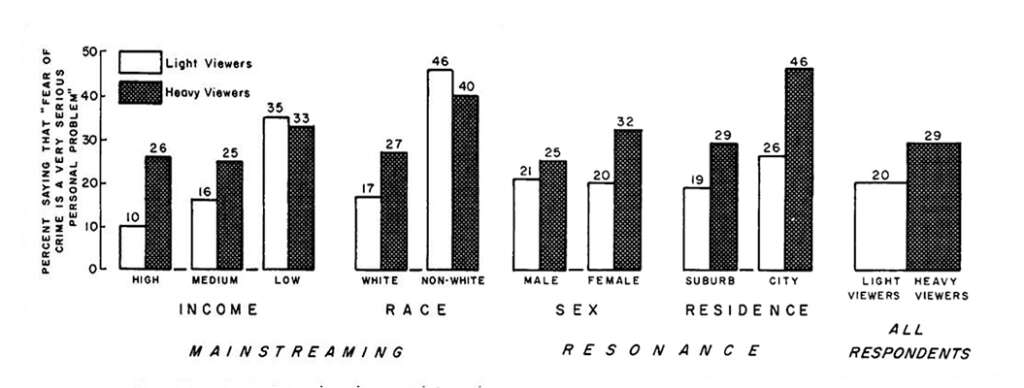Key Terms: reception theory (incl. passive vs active audience), media effects, propaganda, cultivation theory
Reception Theory……asks the simple questions:
- To what extent can we say that the media has an effect on the behaviour and ideology of the individual and society?
- How should that be measured and verified?
- What should we do in the light of this information?
Propaganda
An explainer…watch this…(up to 2 minutes…the rest if you’re interested in history, politics or philosophy…)
Questions for discussion…
- How much of the media you consume could be described as propaganda?
- What’s the difference between advertising and propaganda?
- In the light of an immersive, distracting and attention seeking media ecology (Think: Your smart phone.) are you personally free to make up your own mind about anything?
Active vs Passive Audience

Discussion:
Do you agree with the passive audience theory on how the media feeds us ideas, which we passively absorb and subsequently adopt as our own?
Sounds questionable to me…is the audience really so docile in their own obliviousness?
Sorry, but according to Gerbner…Yes.
Here’s Gerbner…with some Cultivation Theory.
Enter Gerber with a disturbing finding, which at least partially, supports the idea that we are prone to adopt ideas and make assumptions about the real world due to repeated representations and images that we consume in the media.
Gerber showed statistically, the hopefully, common sense assumption that, we see more acts of violence on TV than we do in the real world.
Acts of violence can be anything from… news of Russian’s bombing Ukrainian residential blocks*, cartoon violence in Rick and Morty, martial arts movies, Call of Duty, GTA or The Marvel Cinematic Universe!
* (Question: Unless that too is propaganda? (Follow up question: How can you know?))
Gerbner suggests that, this constant exposure to violence, on what he described as a ‘heavy user‘, i.e.: someone who consumes TV more than four hours a day, shapes their opinions about themselves and the real world.
Aside… Heavy??? Nah… ‘Light’ user, I say, every time I look at my weekly screen time report!!! What’s yours up to?
Anyhoo, Gerbner presented the findings in this graph as evidence:

Notice how the Heavy viewer said that, ‘Fear of crime is a very serious problem in their lives,’ compared with Light Viewers. Mediastudies.com says that,
“Since we all watch the same news and follow the same programmes, Gerbner argued that television creates a common ideology and point of view for the audience. Despite any differences in demographics and cultural backgrounds, we will begin to share the same values and attitudes. He labelled this filtering effect mainstreaming.”

Questions for discussion:
- Can the media really ‘mainstream‘ values, attitudes and beliefs?
- Before, you answer too quickly, ask yourself this question: ‘What’s your favourite brand and why?’
- Do you think that Gerbner’s ideas hold water in the ‘web of one’ model? (See below).
What exam or essay can I use this in?

Extras…
Filter Bubbles and The Web of One
A video about how we no longer all receive the same news or programmes and that we each have our own distinct and in some ways, unique, media feeds. So, if that’s the case is there any such thing as a ‘mainstream’ idea and, if not, is that we now have identity politics and culture wars? We will cover this again in Media Ecology…